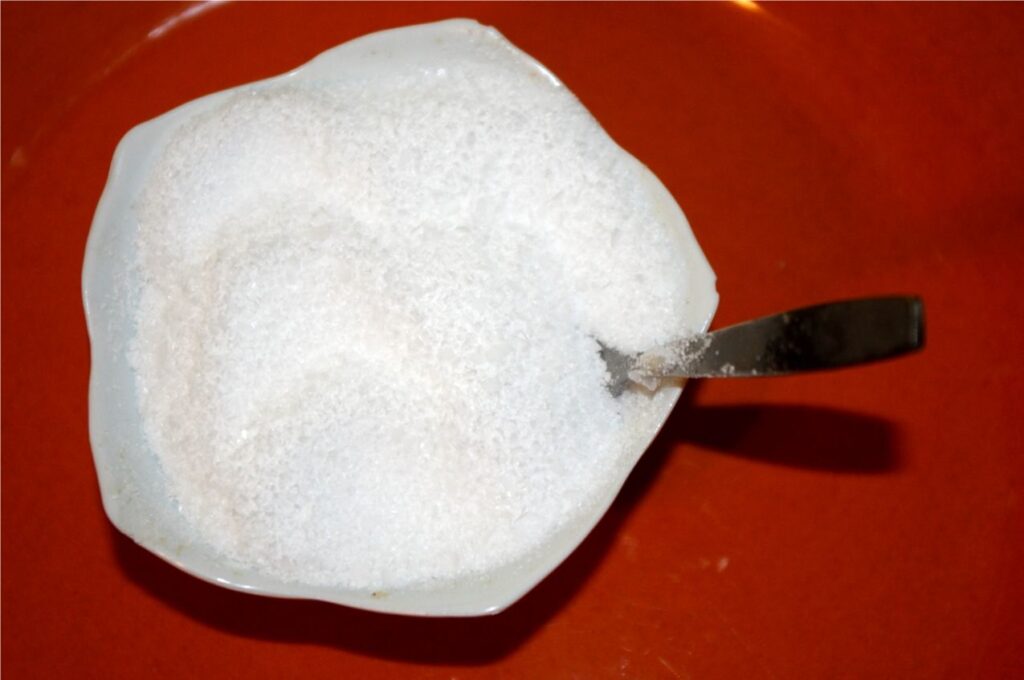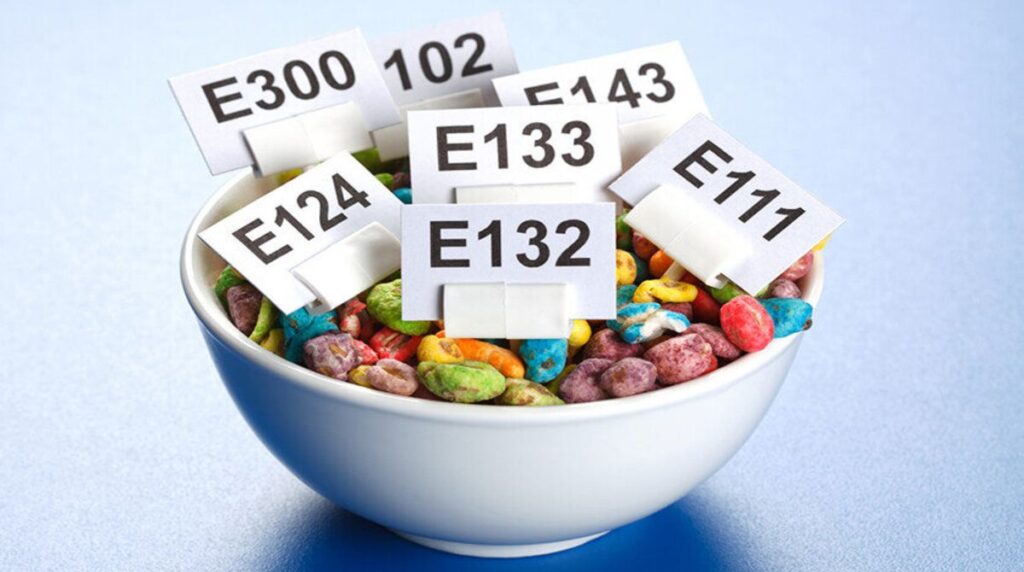
It’s a universally acknowledged truth that fast food isn’t exactly a paragon of health. We’re all familiar with the grim checklist: empty calories, heavy trans fats, a distinct lack of nutritional value, and the antithesis of mindful eating. Yet, despite this awareness, the allure of a quick burger, crispy fries, or a sugary drink remains incredibly potent, often overriding our best intentions and leaving us craving more.
What many of us might not fully grasp, however, is that fast food isn’t just passively ‘not good’ for us; it’s actively, aggressively harmful to our body’s intricate operating systems. The convenience, constant availability, and indeed, the very addictiveness of fast food are meticulously engineered through the use of specific chemicals and preservatives. These substances are often inorganic and, as we delve deeper, reveal themselves to be quite disastrous when introduced into our biological makeup. This isn’t merely about taste; it’s about a calculated assault on our brain’s reward circuits.
The Food and Drug Administration (FDA) in America holds hundreds of documents on food additives and their appropriate quantities, and fast food restaurants are required to list nutritional values. But what lies beneath the surface of these seemingly innocent disclosures? We’re about to embark on an analytical journey, a Vox-style deep dive, into the precise ingredients and sophisticated manipulations that transform everyday edibles into a powerful, almost inescapable, addictive force. Understanding the ‘why’ and ‘how’ behind this phenomenon is the first step toward reclaiming our plates and our health. We will specifically focus on eight key elements that collaborate to create this unparalleled allure, starting with the ubiquitous stimulant that kickstarts many of our days.

1. **Caffeine**Caffeine stands out as one of the most common stimulants woven into the fabric of modern fast food culture. It’s the driving force behind countless drive-thru coffees that kickstart our mornings and the soda refills that punctuate our meals, making them feel incredibly difficult to relinquish. This isn’t accidental; caffeine plays a crucial biological role in fostering that hard-to-resist feeling, providing a swift and noticeable jolt of energy that consumers quickly come to depend on for their daily routines.
The scientific explanation behind caffeine’s potent effect lies in its interaction with our brain’s neurochemistry. It operates by blocking adenosine, a naturally occurring chemical that is primarily responsible for making us feel tired and signaling the need for rest. By inhibiting adenosine, caffeine effectively bypasses our body’s natural fatigue signals, thereby providing a rapid surge of energy. This direct intervention in our wakefulness system creates an immediate and tangible benefit that many find indispensable, especially during busy workdays or long commutes.
Beyond just blocking tiredness, caffeine also has another, equally powerful effect: it significantly increases the release of dopamine in the brain. Dopamine is a critical neurotransmitter, often dubbed the ‘feel-good chemical,’ central to the brain’s pleasure and reward system. The surge in dopamine triggered by caffeine delivers a ‘double hit’ of reward—not only do you feel more alert and energetic, but you also experience a heightened sense of pleasure. This potent combination creates a strong positive reinforcement loop, making the consumption of caffeinated fast food items a highly sought-after experience.
Furthermore, the addictive pull of caffeine is exponentially amplified when it is consumed in conjunction with sugar. This pairing is a staple in many fast food beverages, from sweetened coffees to sodas, creating a synergistic effect that makes these items even more irresistible. The combination of an energy boost, a dopamine rush, and the intense palatability of sugar forms a formidable trio, cementing caffeine’s role as a cornerstone in fast food’s strategy for fostering cravings and repeat business. It’s a prime example of how carefully selected ingredients are engineered to maximize consumer engagement and loyalty, often at the expense of health.
Read more about: Beyond 40: Evidence-Based Strategies for Scientific Weight Management and Metabolic Health

2. **Sugar**Speaking of sugar, it stands as arguably the biggest and most insidious culprit behind the pervasive cravings associated with fast food. Its presence extends far beyond the obvious desserts; added sugars are a virtually ubiquitous component in fast food offerings, lurking in unexpected places like sodas, the buns that cradle our burgers, various sauces, and even seemingly ‘healthy’ salad dressings. This widespread incorporation ensures that nearly every fast food meal delivers a dose of sweetness, making it consistently appealing to our innate preference for sugary tastes.
Every sweet bite of fast food initiates a significant dopamine release in the brain, delivering a potent rush of pleasure and gratification. This immediate reward is precisely what reinforces the addictive cycle. The brain quickly learns to associate the consumption of these sugary foods with positive feelings, driving a desire for repeated experiences. This is not merely about enjoying a treat; it’s about triggering a fundamental biological mechanism that signals reward and encourages repetition, creating a powerful feedback loop that can be incredibly difficult to disrupt.
However, the pleasure derived from sugar is often fleeting, followed by a rapid energy crash that leaves the body and brain yearning for another quick fix. This ‘sugar crash’ is a critical component of the addictive process, as it prompts the consumer to seek out more sugary foods to alleviate the unpleasant sensation and re-experience the initial high. This cycle of pleasure and crash creates a relentless demand for more sugar, becoming a core mechanism by which fast food maintains its hold over consumers and drives repeat purchases.
Furthermore, the type of sugar frequently employed in fast food is often high fructose corn syrup (HFCS), which is a cheap and intensely sweet ingredient. HFCS has been identified as particularly problematic because it can disrupt the body’s natural insulin responses, potentially preventing the brain from receiving clear satiety messages after eating. Unlike natural sugars that might signal fullness, HFCS can bypass these crucial cues, allowing a person to consume more calories than needed without registering satisfaction. This disruption to the body’s internal regulatory system is a calculated feature, designed to encourage overconsumption and deepen the cycle of dependency on fast food, demonstrating a sophisticated level of food engineering aimed squarely at maximizing intake rather than promoting well-being.
Read more about: Unlocking Your Ride: 14 ‘Secret’ Car Features Most Drivers Don’t Know About

3. **Fat**For many, the irresistible pull of fast food often boils down to one glorious sensation: the rich, unctuous taste of fat. Whether it’s that perfectly golden fried chicken, the creamy indulgence of a cheese melt, or the glistening sheen on a burger patty, it’s the fat working its magic. Our brains are inherently wired to crave fats because they are calorie-dense and packed with a richness that signals a concentrated source of energy—a survival mechanism from our evolutionary past that is now exploited in the modern fast food landscape. This primal appeal makes fatty foods inherently satisfying and deeply pleasurable.
Fast foods are explicitly designed to be “energy dense,” meaning they concentrate a significant amount of calories into a single serving. These calories are predominantly sourced from heavy concentrations of protein and, critically, potentially harmful saturated and trans fats. The sheer caloric load, coupled with the rich sensory experience, ensures that each bite delivers a powerful energy signal to the brain, reinforcing the perception of a highly rewarding food source. This density contributes significantly to the feeling of indulgence, making it harder to moderate consumption.
The addictive power of fat becomes even more formidable when it is strategically paired with other key ingredients, most notably sugar or salt. This triumvirate creates a synergistic effect where each component enhances the palatability and desirability of the others, rendering the food almost irresistible. For instance, the combination of fat and salt in crispy fries, or fat and sugar in a rich milkshake, makes every bite feel exceptionally indulgent and satisfying, amplifying the pleasure response and strengthening the craving for more. This engineered combination is a hallmark of fast food’s design, ensuring maximum sensory appeal.
This calculated interplay of fat with sugar and salt is crucial in activating and sustaining the brain’s reward circuits. When these elements are perfectly balanced, they trigger a profound sense of pleasure that can override the body’s natural satiety signals. The rich, creamy mouthfeel of fat, combined with sweet or savory notes, creates a sensory experience that is difficult to replicate with whole, unprocessed foods. This deliberate construction of taste and texture ensures that fast food doesn’t just taste good; it tastes *addictively* good, contributing significantly to the challenge of resisting its pervasive draw and fostering a dependence on these highly palatable, energy-dense options.
Read more about: 13 Stellar Actors Who Didn’t Deserve Their ‘One-Hit Wonder’ Label – What Happened To Their Epic Careers?

4. **Salt**If fast food were a grand performance, salt would undoubtedly be its silent hero, working diligently behind the scenes to elevate flavors and, more insidiously, to leave us perpetually wanting more. Sodium is not just a taste enhancer; it possesses an almost alchemical ability to amplify the flavor profile of virtually everything it touches. Consider the quintessential fast food items—the savory perfection of burgers, the crisp allure of fries, or the succulent crunch of fried chicken. Each owes a significant part of its appeal to a generous, often excessive, dose of salt, transforming bland ingredients into tantalizing culinary experiences.
Scientific studies have consistently demonstrated that salt directly stimulates the brain’s pleasure centers, much like other addictive substances. When we consume salty snacks, our brains release neurochemicals that generate feelings of satisfaction and reward, creating a positive feedback loop that reinforces the desire for more. This biological response is a powerful mechanism that fast food companies leverage expertly; they know that a perfectly salted item will not only be enjoyed in the moment but will also create a lingering craving, compelling customers to return for that familiar, satisfying sensation.
Beyond its direct impact on pleasure, salt plays another cunning trick on our physiology: it makes us profoundly thirsty. This consequence is particularly strategic in the fast food environment. And here’s where the genius of fast food engineering truly shines: since thirst can sometimes be misinterpreted by the body as hunger, the consumption of salty foods subtly nudges us to eat more, even when we might otherwise be satiated. This clever interplay ensures extended consumption during a single visit and encourages the pairing of salty foods with high-sugar beverages, further deepening the addictive experience.
The sheer quantity of sodium in fast food is also a significant concern. It is not uncommon for a single fast food meal to contain an entire day’s recommended allowance of salt. Just about every item on the menu, excluding some desserts, typically packs a hefty dose of sodium. While contributing to the irresistible taste, this excessive intake can lead to serious health problems, including high blood pressure and other cardiovascular issues. The calculated use of salt, therefore, serves a dual purpose: it amplifies palatability and drives consumption, cementing its role as a fundamental pillar in the addictive architecture of fast food. It’s a compelling testament to how deeply engineered these seemingly simple meals truly are.
Read more about: 14 Cinematic Villains Whose Stories Will Break Your Heart When You See Their Side of the Screen

5. **Refined Carbohydrates**Beyond the well-known culprits of sugar, fat, and salt, refined carbohydrates quietly play an equally insidious role in the addictive landscape of fast food. Think of the fluffy burger buns, the crispy fries, the pliable pizza crusts, and the soft tortillas that form the backbone of countless fast food meals. These staples are predominantly made from processed grains, which have been stripped of their essential fiber, leaving behind a product that is both cheap to produce and remarkably easy to overeat without consequence.
Without the natural buffer of fiber, these refined carbohydrates are rapidly broken down and absorbed by the body. This swift digestive process means they quickly convert into glucose, leading to an abrupt and significant spike in blood sugar levels. In response, the pancreas rushes to release insulin to manage this surge, a mechanism designed to shuttle the glucose into cells for energy. It’s a quick, intense energy hit that the brain registers as a powerful reward, contributing to the immediate gratification that fast food so expertly delivers.
However, this rapid spike is invariably followed by an equally precipitous crash as insulin levels overcompensate, leaving the body and brain feeling depleted and, crucially, hungry again. This ‘sugar crash’ creates a relentless craving for another quick source of energy to alleviate the unpleasant sensation, driving consumers back to the very foods that initiated the cycle. It’s a carefully orchestrated metabolic roller coaster, designed not for sustained nourishment, but for continuous consumption and repeat business.
Read more about: Beyond 40: Evidence-Based Strategies for Scientific Weight Management and Metabolic Health

6. **Artificial Flavors and Additives**Have you ever wondered why those chicken nuggets or milkshakes taste so incredibly rich and consistently appealing, often surpassing what you might create at home? You can largely thank artificial flavors and a host of other additives. These lab-made ingredients are meticulously crafted to improve not only the taste but also the appearance and texture of fast food, making it feel far more indulgent and satisfying than its natural counterparts might otherwise suggest. They are the invisible architects of a ‘better than homemade’ flavor profile.
Delving into the specifics reveals a fascinating, if unsettling, array of chemicals. Consider Propylene Glycol, a synthetic substance often found in antifreeze and deodorant, which paradoxically appears in fast food as a component of spice concentrates, food colorings, and flavorings. Or take Caramel Coloring, a compound made from sugars reacting with ammonia and sulfite; the resulting chemicals, 2 and 4-methylimidazole, have been directly linked to thyroid, liver, and lung cancer, prompting the U.S. Center for Science and Public Interest to specifically recommend avoiding it. Then there’s Silicon Dioxide, a fancy term for sand, utilized to prevent clumping in meat-based items like soups and chilis, and notoriously “horrendous for leaky gut.”
The list continues with Tertiary Butylhydroquinone, or TBHQ, a petroleum-derived antioxidant commonly employed to significantly extend the ‘freshness’ of fast food items, contributing to their unnaturally long shelf life. Used in “excessive” quantities, it’s known to wreak havoc on the human system, causing alarming symptoms such as nausea, vomiting, tinnitus, and even delirium. Similarly, Dimethylpolysiloxane, the very substance Silly Putty is made of, is added to deep fryer oils to prevent foaming, which conveniently means restaurants don’t have to change their oil as frequently.
Perhaps most concerningly, Dimethylpolysiloxane’s presence is often ‘guarded’ by other chemicals, like formaldehyde, which are not required to be listed on labels despite their links to allergies, brain damage, cancer, and autoimmune disorders. And let’s not forget Sodium Acid Pyrophosphate, an edible phosphoric salt used as a leavening agent and to prevent discoloration in items like hash browns and fries, though it can cause vision problems and cardiovascular disease in the body. While the FDA classifies many of these as ‘generally recognized as safe’ (GRAS) in small amounts, the cumulative effect of these myriad “inorganic and disastrous” substances on our biological operating systems is a profound and pressing concern, designed for maximum convenience and shelf-stability over long-term health.
Read more about: Uncovering Trader Joe’s Best Frozen Desserts: Which Treats Truly Taste Like the Real Deal?

7. **Rapid Texture and Melting Tricks**The instant gratification delivered by fast food isn’t solely about taste; it’s a meticulously engineered sensory experience, with texture playing a pivotal, often unnoticed, role. That satisfying crunch of a perfectly fried item or the creamy, almost effortless melt of cheese isn’t accidental. Fast food companies invest heavily in understanding and manipulating these textural cues, designing their products to literally disappear in your mouth quickly or to offer just the right resistance, a subtle yet powerful trick in the arsenal of food engineering.
This phenomenon is often referred to as the “vanishing calorie” effect. Foods engineered to melt or dissolve rapidly don’t allow the brain to adequately register their caloric density. When food provides little resistance or quickly breaks down, the brain processes it as less substantial, effectively bypassing the body’s natural satiety signals. Your brain might perceive that you’ve consumed less than you actually have, delaying the feeling of fullness and making it incredibly easy to eat far more than intended.
The consequence of this clever manipulation is significant overeating. Before your body can send the crucial signals that you’ve had enough, you’ve already consumed a substantial amount of calories, fat, sugar, and salt. This subtle yet powerful trick reinforces the addictive cycle by allowing higher consumption rates without immediate satiety, ensuring that consumers are constantly left wanting more, contributing to a persistent craving for those fleeting, satisfying textures.
Read more about: Unlock Professional Food Photography: Your Essential Guide to Stunning Food Shots, Backed by Experts

8. **The “Bliss Point” Combo**If fast food has a master key to addiction, it is undoubtedly the ‘bliss point.’ This isn’t merely the presence of sugar, fat, or salt in isolation; it’s the calculated, perfect combination of all three, orchestrated to create an unparalleled taste experience. This precisely calibrated synergy triggers an intense reward response in the brain, a balance so potent that it becomes incredibly difficult to resist, overriding our natural inclinations to moderate intake. It is the ultimate engineering feat in making food addictively good.
When sugar, fat, and salt are harmoniously balanced at this ‘bliss point,’ they unleash a powerful cascade of dopamine, intensely lighting up the brain’s pleasure and reward circuits. This precise combination delivers a profoundly satisfying sensation that signals immense gratification, creating a strong positive reinforcement loop. The brain quickly learns to associate this specific flavor profile with an undeniable rush of pleasure, driving a compelling desire for repeated experiences and cementing a deep, almost instinctual craving.
Ultimately, the ‘bliss point’ serves as fast food’s most sophisticated mechanism for overriding the body’s normal satiety signals. It’s why, as many attest, it’s a genuine struggle to put down that cheesy pizza with its sweet tomato sauce, or to stop at just a few crispy, salty, fatty fries. This carefully crafted concoction ensures that the food doesn’t just taste good; it tastes *addictively* good, ensuring that consumers remain hooked, perpetually craving the next hit of this perfectly balanced, irresistible combination, cementing its role as a fundamental pillar in the addictive architecture of fast food.
### The Broader Implications: Unpacking Fast Food Addiction
Understanding the meticulously engineered ingredients that make fast food so addictive is merely the first step. The deeper truth lies in the profound implications these engineered foods have on our health and behavior, shaping patterns that extend far beyond a momentary craving. Fast food isn’t just a treat; for many, it becomes a true addiction, strikingly similar in its mechanisms and symptoms to substance addictions like alcohol or drugs.
Indeed, the concept of food addiction is increasingly recognized as a legitimate medical concern. Like other addictive substances, fast food triggers the release of dopamine, the brain’s ‘feel-good’ chemical, creating those powerful pleasure-reward pathways. Over time, individuals can develop a tolerance, needing larger quantities of fast food to achieve the same feeling. Withdrawal symptoms, such as headaches, mood changes, and anxiety, can emerge when addictive foods are unavailable. Many find themselves consuming more than intended, struggling with a persistent wish to stop, and even sacrificing social or professional activities to seek out their preferred fast food items, mirroring the diagnostic symptoms of substance abuse outlined in the DSM.
This engineered addictiveness has played a significant role in the alarming global rise of obesity. The consistent influx of high sugars and refined carbohydrates, particularly prevalent in fast food, forces the pancreas to constantly release insulin. Over time, this can lead to insulin resistance, inhibiting the body’s ability to convert food to energy effectively. Moreover, artificial sweeteners and high fructose corn syrup disrupt the production of leptin, the ‘satiety hormone,’ preventing the brain from receiving crucial signals of fullness. This dual disruption means the body consumes more calories than it needs, leading to weight gain and, if unchecked, potentially life-threatening obesity, highlighting the serious long-term cost to individual and public health.
Given the pervasive nature of fast food and the powerful biological and emotional hooks it employs, treating fast food addiction requires more than simple willpower. Just as with substance abuse, comprehensive approaches are essential. Therapies such as cognitive behavioral therapy (CBT) and solution-focused therapy can help individuals uncover the underlying triggers and modify addictive eating behaviors. Medications for depression and anxiety can assist in managing cravings during stressful periods. Furthermore, nutritional counseling and tailored diet plans are crucial to re-regulate the body’s responses to food, helping individuals move away from processed foods toward healthier choices and ultimately ‘reclaim our plates and our health’ from this meticulously engineered allure.



